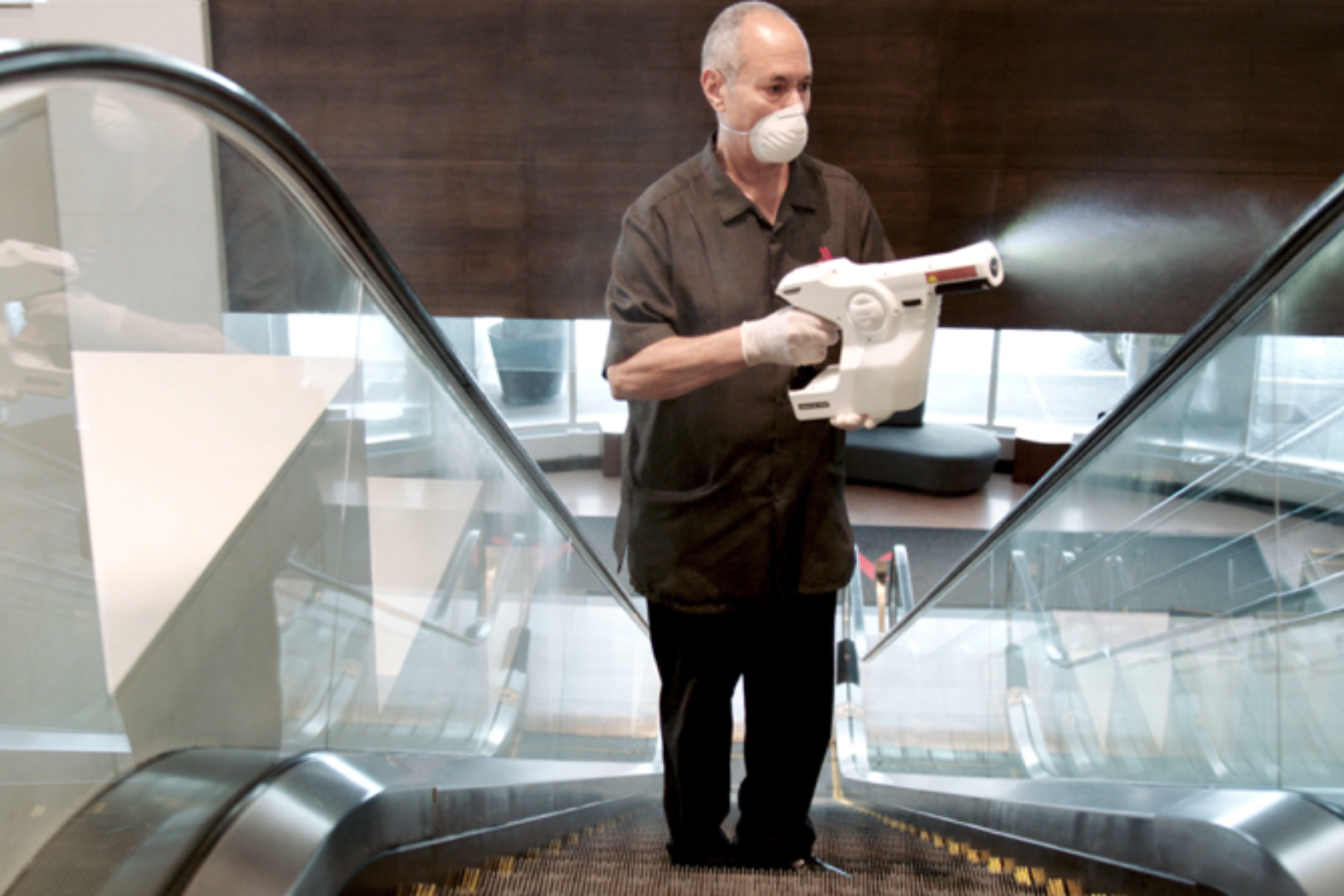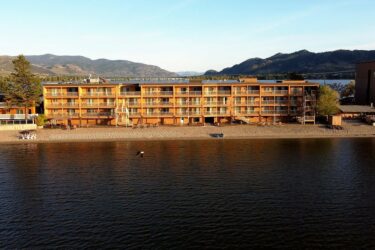
InnVest Hotels acquires The Algonquin Resort St. Andrews by‑the‑Sea, Autograph Collection and The Algonquin Golf Course
InnVest Hotels has acquired The Algonquin Resort St. Andrews by-the-Sea, Autograph Collection and The Algonquin Golf Course.
Electrostatic Spray (ESS) Disinfection has been a wildly well received PR approach to delivering a safe, disinfected environment for guests for Marriott and other hotels. As the adage goes, “The devil is in the details,” Jason Cheskes reports.

By Jason Cheskes, President, Above the Line Solutions
*The following is a CLN abridged version of a more detailed document. The full version can be downloaded here.
Electrostatic Spray (ESS) Disinfection was relatively unknown as a concept in the lodging industry until Marriott announced the intent to implement this globally as a creative industry-leading measure. It has been a wildly well received PR approach to delivering a safe, disinfected environment for guests. The concept has evolved into something that other brands and independents are now looking to adopt. As the adage goes, “The devil is in the details”.
Since the concept was introduced, it is now clear that it is the intent of many to utilize this process not only in public areas, but to treat each checked-out hotel room prior to new guests arriving. Any hotels considering such, need to be aware of several important things prior, primarily that Health Canada has not yet approved any disinfectants through the use of such sprayers, until specific approvals have been granted, stating that disinfecting is taking place, or that a disinfectant is being used, it is not allowed.
Following a review of Marriott’s approach with their senior management team leading the initiative, it is clear that they have done a massive amount of research and continue to do so, including testing and consultation with various agencies including EPA, CDC, and others in the United States to come up with an approach that is not only industry leading, but covers all the key aspects of the various considerations needed. Others without employing this amount of diligence will have to make their own decisions. Any should be aware that in emulating Marriott’s concept, use of these devices to apply disinfectant should be done only after significant considerations.
Three main areas of consideration should be undertaken before implementing a process of using disinfectant product though Electrostatic Spraying.
Chemical products ®ulations relating to disinfectant claims with ESS:
The idea of using disinfectants in this manner is a new concept and considerations are still evolving. Many suppliers of disinfectants may not be aware that using their product in an Electrostatic Sprayer, especially with a disinfecting claim is not allowed currently in Canada. Health Canada in in the process of creating a specific guidance clarification document to be published very shortly on this.
For clarity, use of the classification word “disinfectant” is regulated by Health Canada and any product must receive specific approval for use through an electrostatic sprayer, or it isn’t able to be used or marketed as a disinfectant in relation to ESS. In Canada, there are no products yet approved for this use and doing so invalidates the product’s DIN registration and as such, the product can’t be referred to as a disinfectant or being used to disinfect.
Safety:
Questions related to safety should start with information listed on a product’s Safety Data Sheets (SDS). A review of whichever product is considered should include that the SDS sheet has been updated for this specific use and all PPE should include protection for inhalation and ideally sealed eye protection.
For example, Clorox’s Total 360 system SDS information specifies that eye protection is required and N95 masks should be used for prolonged use. While the company’s videos show the user wearing masks and goggles, others promoting its use or that of other approaches, often do not.
The very nature and advantages ESS offers is to be able to get solutions into ‘nooks and crannies’ and hard to reach places, as the device causes spray to travel in directions beyond where the nozzle is aimed directly, around items and against gravity. This could potentially include lungs, eyes and skin. Donald Trump may be a proponent of inhalation of these types of products, but most intelligent people would disagree.
With these considerations in mind, it is recommended that the specific intentions may be worthwhile reviewing with the OH&S regulator for the province or a third-party professional prior to employing this procedure for in-room use.
How will repeated us of electrostatic disinfectant spraying impact the contents of my hotel room?
The answer is that no one really knows. In normal times, one would expect a diligent and thorough testing process to determine the answer. These are not normal times though. Marriott has done a significant amount of testing based on specific products, procedures, and with items typical of their room standards but the outcomes may not be universal when variables exist or an approaches don’t match their testing.
Disinfectants are approved based on specific wet contact time and in Canada the length of time required for surfaces to be wet is often significantly longer than in the U.S. for EPA. Electronics are not typically compatible with moisture and the nature of the application by electrostatic spraying is that it gets into areas other than those where the spray is directly aimed. Questions exist in terms of other materials in the room being exposed on a repeated basis to different types of disinfectants and moisture. Without specific testing, such as being employed by Marriott, it is difficult to know the impact from long term use.
Many hotels are planning on leaving the rooms without daily cleaning until check-out, which will cause a greater accumulation of soils in between cleaning. Aside from soils affecting efficacy of the disinfecting result, they can bond with solutions and leach into porous materials creating into difficult-to-clean compounds. Further, products could build up on the material and could cause challenges in terms of removal of residue.
Using ESS or fogging in a room should ideally be done only after strong understanding of a procedure and product that minimizes risk of damage to all items. At minimum, test the products repeatedly on surfaces that are likely to receive repeated exposure.
Summary:
While the concept of increased disinfection of hotel rooms is a laudable goal and one which may resound with the public, there are many questions that result from this approach. Determinations required include:
The current delay in availability of these devices, as well as the fact that Health Canada will need to first approve any products for use, provides time and opportunity for additional consideration of the use of these devices for use with disinfectants and also with a related subject; consideration of the use of handheld UV lights for which Health Canada does have existing regulations.
Jason Cheskes is President of Above The Line Solutions, an advisory firm specializing in procurement and strategic contracting with a focus on the hospitality industry. He has also been the Director of Corporate Accounts for Ecolab and is a long term Director on the board of the Ontario Restaurant Hotel and Motel Association (ORHMA), and works with the BC Hotel Association with regard to supplier partnerships.



InnVest Hotels has acquired The Algonquin Resort St. Andrews by-the-Sea, Autograph Collection and The Algonquin Golf Course.

The new owners of the famed Windermere House hotel and resort on Muskoka’s Lake Rosseau intend to revitalize the building and its amenities while preserving the property’s historical integrity.

Proactive Hospitality has acquired the Coast Osoyoos Beach Hotel, B.C. CFO Capital arranged acquisition financing for the deal.

Tribute Portfolio – part of Marriott Bonvoy's extraordinary portfolio of 31 hotel brands – continues to grow its global family of characterful hotels with Honeyrose Hotel Montreal, a Tribute Portfolio Hotel, the brand's…